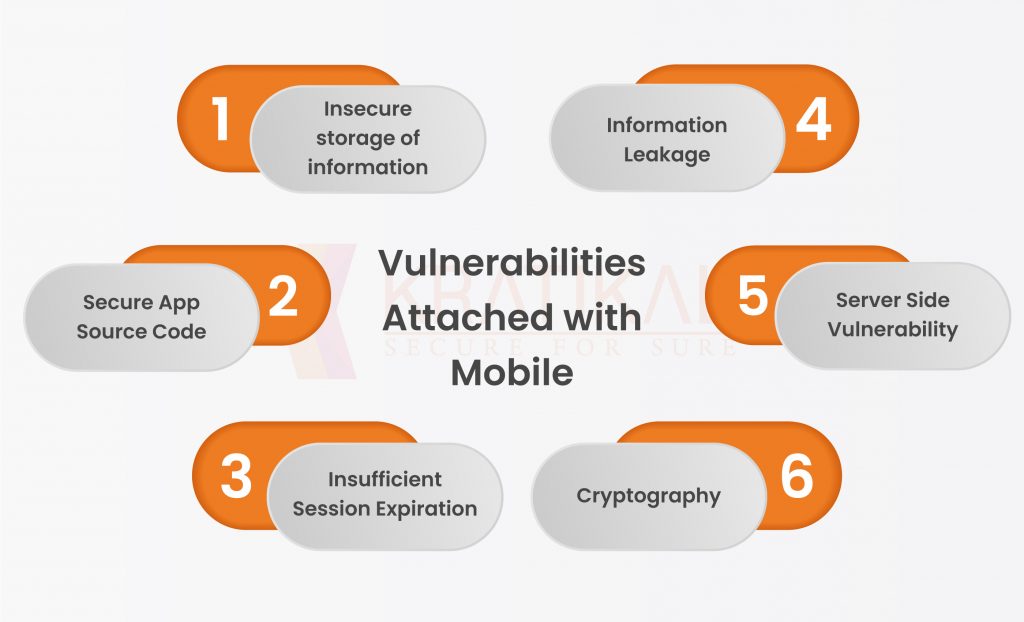Mobile developers must be constantly aware of security flaws and possess the knowledge necessary to mitigate them in light of the increasing number of mobile apps. Developers can learn how to keep the security of their mobile apps up to date to safeguard them from assaults by consulting the OWASP mobile top 10 vulnerabilities.
A community-based organization called Open Web Application Security Project (OWASP) aims to raise public awareness of the need for secure software and applications. In addition, OWASP sponsors a number of highly regarded training and educational initiatives in the area of cybersecurity.
The most frequent security flaws for mobile apps will be discussed in this blog, along with the most widely used security checks. We will also go through technologies for safeguarding mobile apps in a CI/CD pipeline and discuss best practices for security testing in mobile apps.
Table of Contents
Get in!
Join our weekly newsletter and stay updated
What is Mobile Application
Our daily lives now include mobile applications inextricably. We depend on mobile apps to carry out significant transactions, store sensitive information, and connect with people across a variety of platforms, including social networking, banking, and retail. The risk posed by mobile application vulnerabilities, however, is increasing along with the use of mobile apps.
Mobile application vulnerabilities are weak points or faults in a mobile app that can be used by attackers to obtain confidential information without authorization or to jeopardize the safety of the system or network. These flaws might be present in the coding, the user experience, or even the communication protocols the mobile app uses.
Developers must put their applications through rigorous security testing in order to reduce the security risks associated with them. Fortunately, there are technologies out today that make these security tests easier to perform and even automate. Best practices can help direct and educate the testing process.
Vulnerabilities Attached with Mobile Applications
With over 2.9 million apps available in the Android Play Store, Android is the most widely used mobile operating system. Nevertheless, Google has banned a large number of apps from the Play Store for a variety of security reasons. One should be aware of these security flaws if they are developing for Android. There are several, and a few important ones are given here.

- Insecure storage of information: When confidential data is not kept on the device in a secure manner, this risk arises. Every time we keep data on a device, we should always assume that it is not safe because it can be stolen, and storing sensitive data on that device increases the risk of that information being stolen. Apps should save sensitive data in keychain pairs in order to avoid this issue. Data should be encrypted if the application keeps information in an SQLite database.
- Secure App Source Code: An application can be breached by bugs and vulnerabilities in the application code. A public copy of your app is all that is required for most attackers to attempt to break your logic and reverse engineer your app’s code. When you are writing your code, keep security in mind to make it difficult to crack. Your program’s code might be hidden before it is uploaded to the app store. Additionally, remember to create a backup of your original source code before you obfuscate it for maintenance and improvement needs.
- Insufficient Session Expiration: The session IDs used by an app should be invalidated when a user signs out of the program. If the server doesn’t remove the session IDs, other users might be able to utilize them and take action on their behalf. Making sure the application’s logout button is operational and that, in addition, the user’s session is correctly invalidated when they click it is the best practice for overcoming issues.
- Information Leakage: The primary application code or third-party frameworks both have the potential to expose data from app caches. Many users do not lock their devices, making them vulnerable to theft or loss. A hacker who has access to the device may examine the cached data. To solve this issue, make sure that private information is not unintentionally leaked through the cache. Developers can make a threat model for the OS, framework, and platform to check and verify how data is handled during URL caching, logging, copy-and-paste caching, app background processing, HTML5 data storage, and analytic data that is sent to the server.
- Server-Side Vulnerability: However, in order to lessen the amount of work required on the server, the app design should incorporate input validation checks and controls. Unauthenticated access should be prevented from the server side. Before the app executes the server, we can examine the input data and prevent any unwanted action. The sorts of input data that are necessary can be whitelisted, and the remaining types can be banned on the app side. Data received and sent from the app and server sides should both be encrypted.
6. Cryptography: When the application either fails to validate SSL/TLS certificates or makes use of an SSL/TLS certificate validation system that is unable to properly confirm that the certificate was provided by a reliable source. In the event that the certificate cannot be checked or is not provided, the server ought to be set up to terminate the connection. Any type of data transferred via a connection without a certificate that has been verified could be vulnerable to hackers.
The answer is to ensure that your application’s certificate validation is set up to appropriately confirm that a certificate is provided and that the certificate should come from a reputable Certificate Authority or another trustworthy source.
Get in!
Join our weekly newsletter and stay updated
Remediation Measures for These Vulnerabilities
- Update operating systems and software on mobile devices: As soon as practical, mobile devices should have the most recent versions of their operating systems and applications installed. This makes it easier to make sure that vulnerabilities are patched.
- Utilize mobile device management (MDM) applications: MDM software enables IT administrators to protect and remotely control mobile devices. It can be used to impose password rules, wipe stolen or lost devices, and apply security patches.
- Use secure networks: To lessen the chance of a man-in-the-middle attack, only connect to secure networks, such as those that employ WPA2 encryption.
- Use two-factor authentication: By asking users to give a second form of identity, such as a fingerprint or a one-time code delivered via text message, two-factor authentication can help prevent illegal access to mobile devices.
- Educate users: Users should be made aware of security concerns so they can be identified and avoided. This will help to prevent mobile vulnerabilities.
- Be cautious when downloading apps: Programs should only be downloaded from legitimate app stores, and you should exercise caution when installing apps from untrusted sources.
Conclusion
Testing mobile applications include examining them to ensure that they meet the standards for quality, functionality, compatibility, usability, and performance. It is an operating system based on Linux and was particularly created for touchscreen mobile devices like tablets and smartphones. Mobile devices are no longer solely used for wireless telephonic communication; instead, mobile apps are a part of the larger mobile ecosystem, which also includes servers, data centers, network infrastructure, and mobile devices.
The complete evaluation process must include a stage called VAPT for mobile applications since it improves app security and lowers the chance of fraud, malware infection, data leakage, and other security flaws.
A VAPT business can help you defend your systems from hackers by doing vulnerability analysis and penetration tests. You may take precautions to mitigate the effects of a security emergency if you are aware of the risks your business confronts and how they could affect you.
Kratikal, a CERT-In-empanelled organization, can assist you in learning more about these risks through the use of our manual and automatic VAPT services, which discover, detect, and assess the vulnerabilities present in your IT infrastructure. We also offer security auditing for compliance, including ISO/IEC 27001, GDPR, PCI DSS, and many more, to help your business comply with the laws and regulations issued by various governments.
Contact us if you’d like to get your Android app tested and make it more secure.









Leave a comment
Your email address will not be published. Required fields are marked *